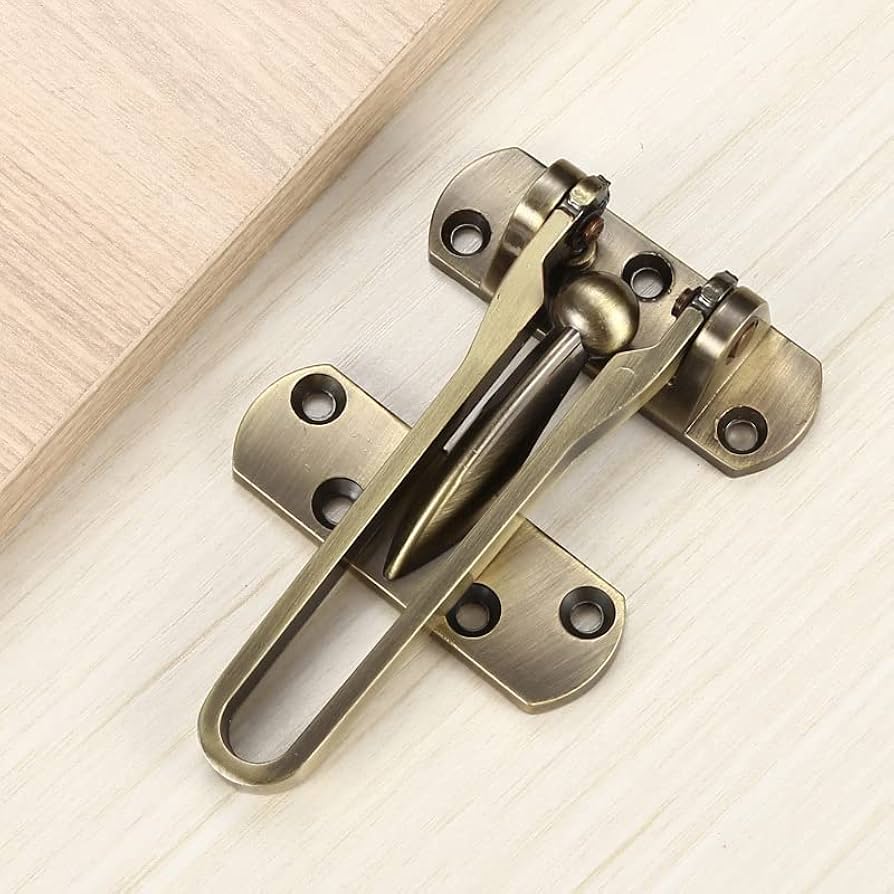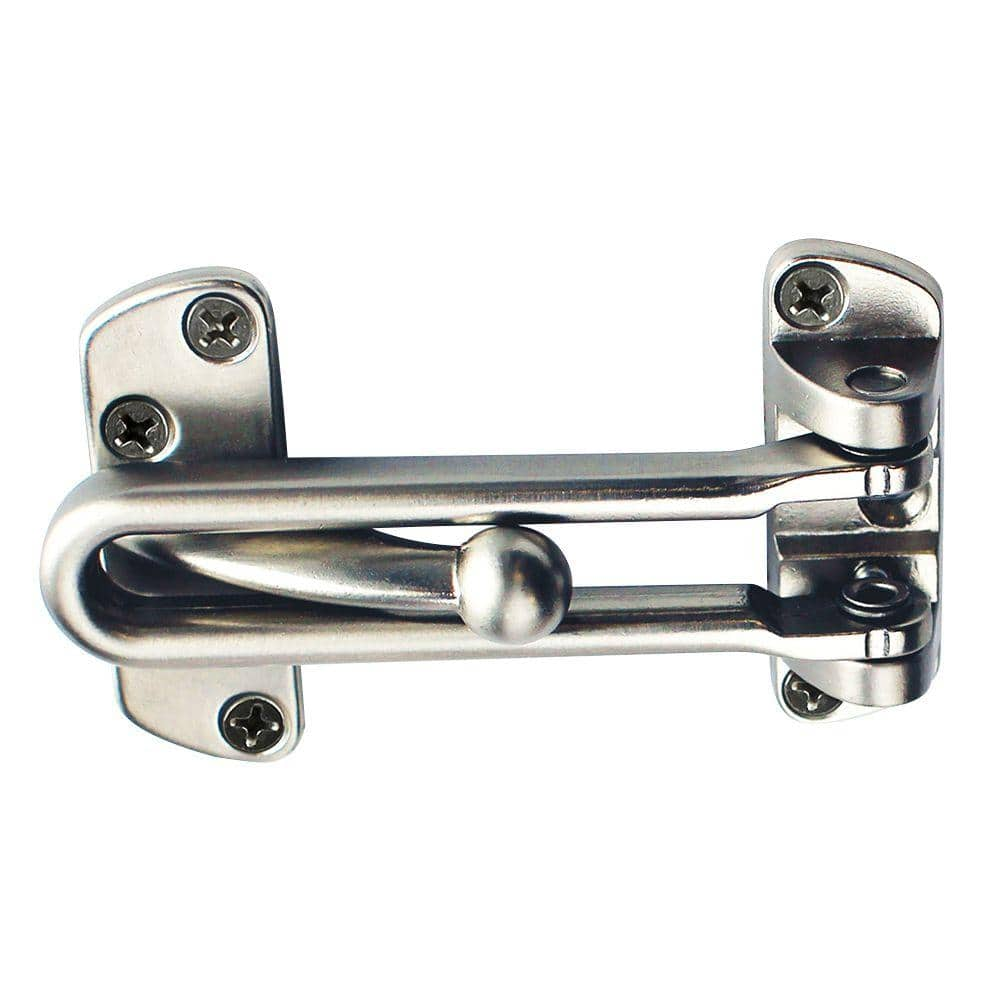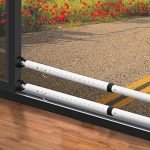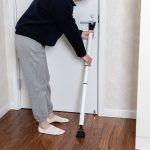Types of Door Security Latches
Door security latches are a crucial component in enhancing home safety. They provide an added layer of security by making it more difficult for intruders to gain entry. Choosing the right type of door security latch depends on your specific safety needs, door type, and personal preferences. Here are some of the most common types:
Deadbolts
Deadbolts are among the most reliable types of door security latches. They operate through a bolt that slides into the doorframe, which makes forcing the door open very challenging. Most homeowners prefer deadbolts due to their strength and simplicity.
Chain Latches
Chain latches act as a secondary barrier. They allow you to open the door slightly to see who’s there without granting immediate full access. Chain latches are not as strong as deadbolts, but they serve as a good deterrent.
Swing Bar Locks
Swing bar locks provide a high level of security and are easy to operate. They consist of a bar that’s placed over a latch, preventing the door from being opened from the outside, even with a key.
Surface Bolts
Surface bolts are mounted on the interior side of the door. They slide into a bracket or a small hole in the floor or door frame, adding an extra locking point. This type can be easily installed at various heights on the door.
Each of these latches offers different benefits, but all serve to enhance the security of your home. When incorporating a door security latch into your safety measures, carefully consider which type meets your needs. In the next sections, we’ll delve into the importance of door security latches, installation tips, and how to maintain them to ensure long-lasting protection.
The Importance of Door Security Latches
Door security latches aren’t just hardware; they’re a vital part of home defense. These devices play a key role in deterring unauthorized entry and bolstering the safety of your home.
Deterrents to Intruders
Robbers look for easy targets. A door fitted with a visible security latch often convinces potential intruders to move on. The sight of deadbolts, swing bar locks, and surface bolts can signal that a home is well-secured, making it less attractive to burglars.
Peace of Mind for Homeowners
Knowing your doors are secured with reliable latches can bring significant peace of mind. When you’re at home or away, you feel confident that your residence is protected against break-ins. This feeling of security is invaluable for the well-being of homeowners and their families.
Added Layer of Protection
A robust door security latch acts as an added layer of defense, supporting your primary lock system. Whether you choose deadbolts, chain latches, or any other type, each adds to the overall integrity of your door security, reducing the chances of forced entry.
Installation Tips for Door Security Latches
Proper installation is key to ensuring that your door security latches function correctly. Paying attention to the location, having the right tools, and following a step-by-step guide will help you secure your home effectively.
Choosing the Right Location
Select a height on the door that is convenient yet out of reach for small children. The location should also allow the latch to anchor firmly into a strong part of the door frame. For example, install deadbolts about 40 to 48 inches from the floor.
Necessary Tools and Materials
You will need:
- A drill with various drill bits
- Screws and a screwdriver
- A measuring tape
- A pencil for marking
- A level to ensure the latch is straight
- The door security latch kit
Gather these before starting to ensure a smooth installation process.
Step-by-Step Installation Guide
- Measure and mark the spot where you will install the latch.
- Drill pilot holes for screws, as specified by the latch instructions.
- Place the latch against the door and screw it in securely.
- Test the operation of the latch to confirm correct installation.
- If installing a deadbolt, drill a hole for the bolt to slide into the doorframe.
- Insert and tighten the bolt mechanism in the door.
- Ensure all moving parts are functioning and the door opens and closes smoothly.
Follow the manufacturer’s instructions for specific details on your door security latch model. Properly installed latches boost your home’s defense and provide peace of mind.
Maintenance and Upkeep of Door Latches
Proper maintenance is key to ensuring door security latches keep doing their job. Simple, routine checks and care can make a big difference in maintaining their effectiveness over time.
Regular Inspection
Inspect your latches every few months. Look for signs of wear and tear like rust or loose screws. Make sure the latch mechanism operates smoothly. Promptly addressing issues can prevent failures in critical moments.
Cleaning and Lubrication
Dust and debris affect latch performance. Clean your door latches with a mild cleaner. Apply a lubricant suitable for metal parts twice a year. This keeps moving parts in good working condition.
When to Replace Your Latches
Replace latches if they show excessive wear, corrosion, or if they no longer function smoothly. Upgrading to newer models with advanced security features is also a good idea. This ensures you maintain optimal home security. Always consult a professional if unsure about when to replace your security latches.
Advanced Security Features
Today’s door security latches come with advanced features that provide additional safety benefits. These features enhance traditional latches and offer smarter ways to secure your home.
Integrated Alarms
Modern door security latches can come with integrated alarms. These alarms trigger a loud sound when someone attempts to force the door open. Integrated alarms serve as an immediate deterrent to potential intruders. They also alert homeowners and neighbors to a potential break-in, increasing the chances of thwarting the attempt.
Smart Locks and Connectivity
Smart locks represent the next level in door security latch technology. They connect to home automation systems and mobile devices. This allows you to lock and unlock your doors remotely. Smart locks provide real-time notifications of door activities. They often include features like keyless entry and the ability to grant temporary access codes to visitors.
Reinforced Strike Plates
A reinforced strike plate is a small, yet powerful upgrade to your door’s security. Strike plates made from robust materials and longer screws make the doorframe much tougher to break. These plates ensure that the latch or deadbolt has a stable and strong base to secure into, making forced entry significantly more difficult.
Selecting the Right Latch for Your Home
Choosing the right door security latch is crucial for your home’s safety. Think about what you need to protect and the types of threats you might face. Match the latch to your concerns to ensure you have peace of mind.
Assessing Your Security Needs
Start by thinking about your security goals. Do you want to deter burglars, or is child safety a priority? Consider your home’s location. A busy city might require a different latch than a quiet suburb. Look at your daily routine. Do you need to let in guests or service providers? Choose a latch that fits your lifestyle.
Compatibility with Door Types
Not all latches work with every door type. Check the door material, such as wood, metal, or glass. Measure the thickness of the door. Make sure the latch fits well and provides a strong hold. Consult experts if needed to find the best match for your door.
Aesthetic Considerations
Safety is important, but so is the look of your home. Latches come in various styles and finishes. Pick one that complements your door and home’s overall design. Remember, a well-chosen latch can add to both security and curb appeal.
Pros and Cons of Different Latch Designs
When selecting a door security latch, it’s essential to consider the advantages and disadvantages of each design.
Balancing Security and Accessibility
High-security latches like deadbolts offer top-notch protection, but they may not be as quick to open in an emergency. In contrast, chain latches provide ease of use but might not offer as much strength against forced entry. Homeowners need to find a middle ground that offers both security and convenience.
Considering the Cost
The cost of door security latches can vary widely. A standard deadbolt might be affordable, but smart locks with advanced features could be a significant investment. It’s important to set a budget and weigh the cost against the security benefits you’re gaining.
Understanding the Limitations of Latches
No latch is foolproof. Even the most robust latches have their vulnerabilities. For example, some can be picked or bypassed with the right tools or knowledge. It’s vital to understand that latches are part of a broader security system, which should include good practices like proper lighting and alarms.
Legal Considerations and Compliance
When installing door security latches, you must consider legal aspects and compliance. These regulations ensure safety standards and protect rights.
Adherence to Local Building Codes
Local building codes set standards for construction and renovations, including security features. Check these codes before installing door security latches. Noncompliance can lead to fines or required modifications. Contact local authorities or a building inspector for guidance.
Understanding Landlord-Tenant Laws
If you’re renting, be aware of landlord-tenant laws. Some regions allow tenants to add security devices, but landlords might need to approve them. Tenants can’t make alterations that significantly change the door or structure without consent. Always review your lease agreement and discuss any changes with your landlord.
Impact on Insurance Policies
Adding security latches may affect your home insurance policies. Some insurers offer discounts for added security measures. But, some modifications without informing the insurer might violate your policy. Check with your insurance provider about requirements for installing additional security measures like door latches.




